How wide is Colorado’s Lake Granby? At its maximum, the lake, located in Grand County, is 1.5 miles (2.4 km) wide. For perspective, it would take the average human the better part of an hour (48 minutes and change) to swim across Lake Granby. It would take the average bear 15 minutes to cover the distance. And a dolphin? A dolphin could swim the width of Lake Granby in about a minute!
What Lake Granby lacks in width, it makes up for in volume! With a surface area of approximately 7,256 acres (29.4 km²) and a shoreline of around 40 miles (64 km), Lake Granby is an expansive reservoir in the central part of Colorado, near the towns of Granby and Grand Lake. Lake Granby sits at an elevation of approximately 8,280 feet (2,524 m). The high elevation of the lake contributes to the cool climate and stunning mountain scenery. So, what are you waiting for? Grab your fishing pole or your swimsuit, as we visit Colorado’s third-largest body of water.

At its maximum, Lake Granby, located in Grand County, is 1.5 miles (2.4 km) wide.
©iStock.com/Lunnderboy
History
By volume, Lake Granby is the third largest body of water in Colorado. It is an artificial reservoir formed by the construction of the Granby Dam on the Colorado River. Construction crews worked on the dam from 1941 until 1950. Its purpose was to provide water storage for agricultural irrigation and municipal water supplies. The dam is a key component of the Colorado-Big Thompson Project, a large-scale water diversion and storage system controlled by the Bureau of Reclamation.
The dam is 298 feet (91 m) high. Granby Dam impounds Granby Reservoir, which has a capacity of approximately 539,000 acre-feet (665 million m³) of water at capacity. The primary function of Granby Dam is water storage. The reservoir helps regulate the flow of the Colorado River and provides a reliable water supply for agricultural activities in the region. It also plays a crucial role in the augmentation of water resources for the eastern slope of the Rocky Mountains. Officials release water in the reservoir as needed to meet downstream water demands. Granby Dam, interestingly enough, does not generate hydroelectric power.
Recreation
Water sports reign supreme on Lake Granby, with options for motorized and non-motorized boats. Water skiing, wakeboarding, wake skating, wake surfing, knee boarding, and tubing are popular at the lake. The surrounding area also has options for landlubbers, too. Campsites, both tent and RV, are numerous. Hikers can explore scenic trails that wind through nearby Arapaho National Recreation Area and Rocky Mountain National Park. The lake’s setting makes it a popular destination. The stunning peaks surrounding the lake and its crystal-clear waters provide a tranquil atmosphere for a peaceful retreat. Nature lovers and photographers visit the region often.
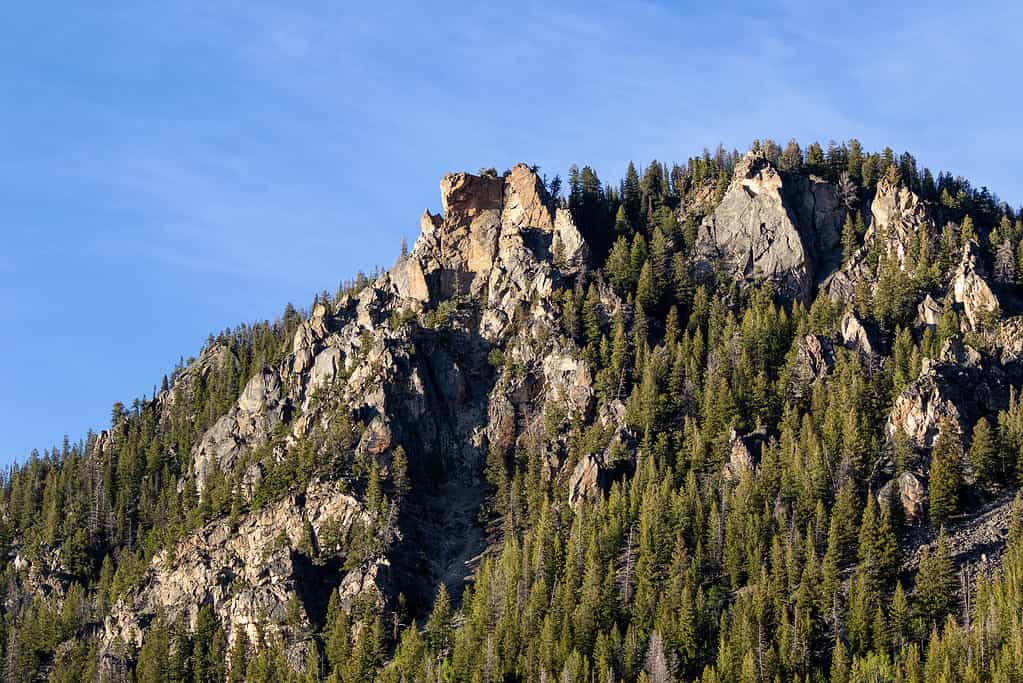
The stunning peaks surrounding Lake Granby and its crystal-clear waters provide a tranquil atmosphere.
©Ryan Gray/Shutterstock.com
Lake Granby and its surrounding area transform into a winter wonderland during the colder months. The frozen lake becomes a popular spot for ice fishing, ice skating, and even ice sailing. The nearby mountains provide opportunities for winter sports such as skiing, snowboarding, and snowshoeing.
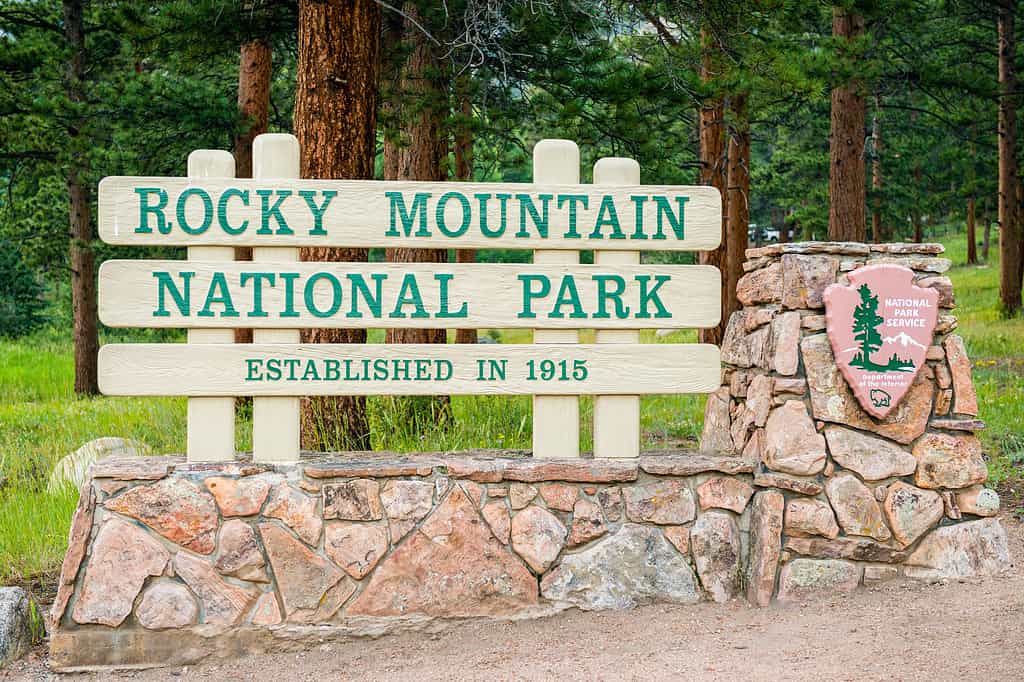
Hikers can explore scenic trails that wind through nearby Rocky Mountain National Park.
©NatalieJean/Shutterstock.com
Wildlife
Fish
Lake Granby is renowned for its fishing. It is home to several species of trout (Salmonidae), including rainbow trout, brown trout, and lake trout (aka Mackinaw). Kokanee salmon (Oncorhynchus nerka), a landlocked version of sockeye salmon, are also present in the lake. Motorized boats are allowed on Lake Granby, providing anglers with the opportunity to explore different areas of the lake. Boaters can launch their boats from various access points and marinas around the lake. However, be aware of and observe speed limits and no-wake zones. These are in place to keep everyone safe.
If you don’t have access to a boat or prefer fishing from the shore, Lake Granby offers several locations for shoreline fishing. Public access points, including fishing piers and designated fishing areas along the lake’s shoreline, are perfect for dropping a hook. Fly fishing is also popular at the lake. During the winter months, when the lake freezes over, ice fishing becomes a popular activity at Lake Granby. Anglers drill holes in the ice and fish from the frozen surface. Ice fishing can be a rewarding experience, especially for catching species that are active during the colder months, like trout and salmon.
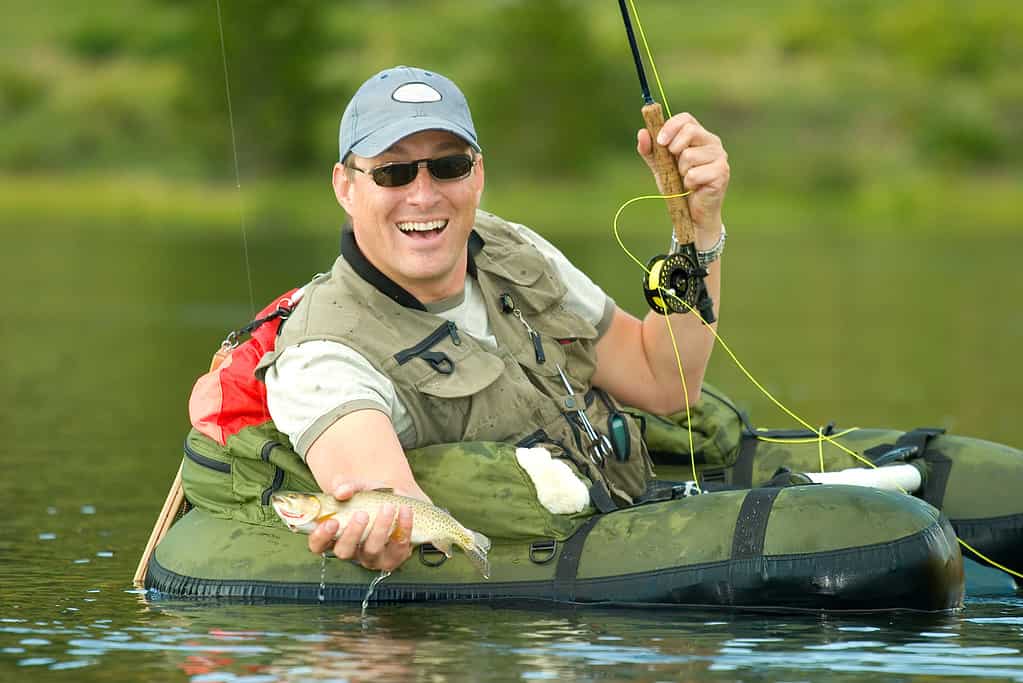
Lake Granby has amazing fishing. it is home to several species of trout!
©iStock.com/scottdharris
Mammals
The surrounding forests and meadows provide habitats for a variety of mammals. Elk, moose, mule deer, beavers (Castor canadensis), foxes (Vulpes vulpes fulva), coyotes (Canis latrans), and black bears (Ursus americanus) call the area around Lake Granby home. Smaller mammals such as squirrels (Sciuridae), chipmunks (Marmotini), and rabbits (Leporidae) are also common.

The surrounding forests and meadows provide habitats for a variety of mammals.
©Ondrej Prosicky/Shutterstock.com
Birds
Lake Granby and its surrounding forests provide habitats for numerous bird species, like bald eagles. These majestic birds soar overhead or perch in trees along the shoreline. Ospreys (Pandion haliaetus) are another bird species visitors frequently see around the lake. These birds of prey dive into the water to catch fish, their primary food source. Additionally, various species of waterfowl call the lake home, including ducks, geese, and swans. Canada geese are particularly common, to which their honking calls attest. Songbirds, such as robins, bluebirds, sparrows, and warblers also reside in the area. Raptors, including hawks and owls, are also present.
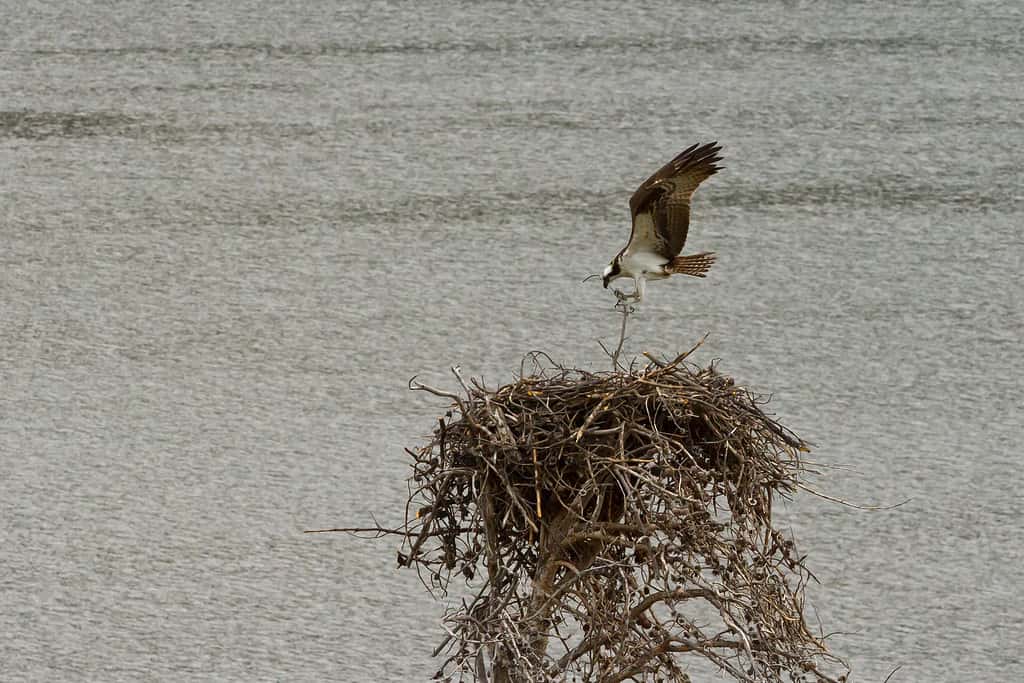
Ospreys reside around the lake.
©Robert O Hull/Shutterstock.com
Reptiles and Amphibians
Lake Granby provides a habitat for several reptile and amphibian species. The common garter snake and the western terrestrial garter snake are two common species. Snapping turtles sun themselves on logs protruding from the waters of Lake Granby, primarily in the early spring. Listen for the boreal chorus frog, a small tree frog species with a distinctive call, which resembles the sound of a fingernail running along a comb. The wood frog thrives in cold climates and is often the first frog to breed in the spring.
Tiger Salamanders have distinct yellow or olive markings and spend most of their time underground.
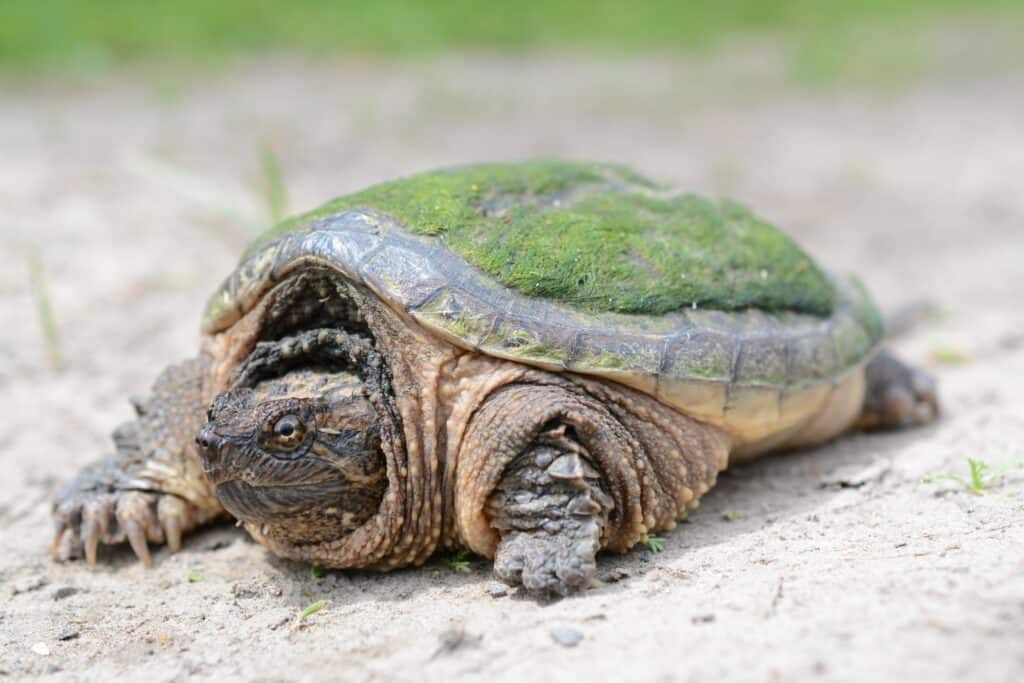
Snapping turtles sun themselves on logs in the waters of Lake Granby, primarily in the early spring.
©Trevor Meunier/Shutterstock.com
At A Glance: How Does Lake Granby Compare?
| Lake / Location | Width of Lake |
|---|---|
| Lake Superior, Ontario, Canada, Minnesota, Wisconsin, Michigan, USA | 170 miles (280 km) |
| Lake Victoria. Kenya, Tanzania, Uganda, Africa | 150 miles (240 km) |
| Great Slave Lake, Northwest Territories, Canada | 126 miles (203 km) |
| Lake Eyre, Australia | 40 miles (65 km) |
| Great Salt Lake, Utah, USA | 27.96 miles (45 km) |
| Lake Tahoe, California and Nevada, USA | 11.81 miles (19 km) |
| Lake Granby, Granby, Colorado, USA | 1.5 miles (2.4 km) |
Where Is Lake Granby Located on a Map?
Lake Granby has the Rocky Mountain National Park to the northeast and the Arapaho and Roosevelt National Forests to the southeast. It is about 95 miles northwest of Denver in the north-central part of Colorado. From the south, it can be accessed by the I-70 and US-40 highways.
The photo featured at the top of this post is © mredd/Shutterstock.com
Thank you for reading! Have some feedback for us? Contact the AZ Animals editorial team.







